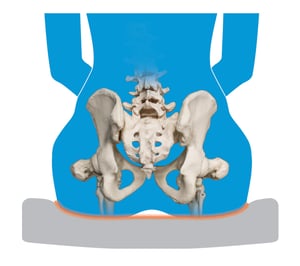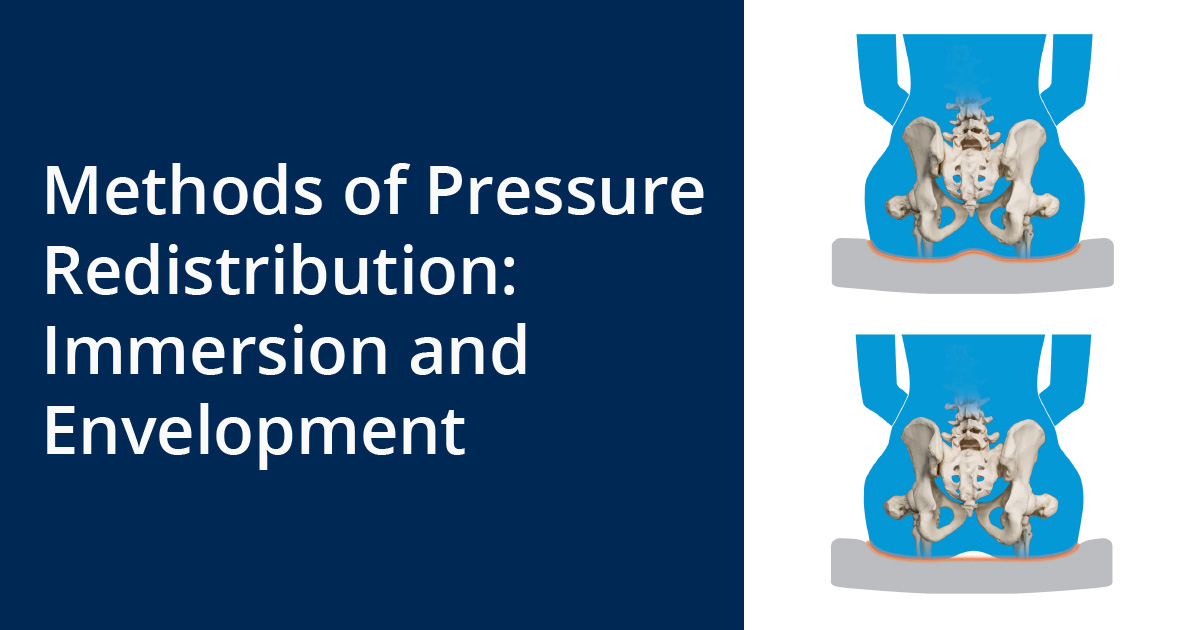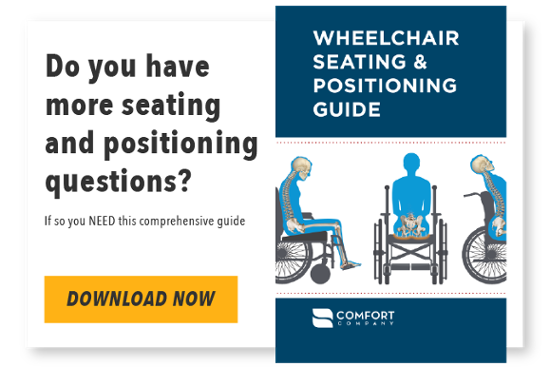Looking for more information on seating and positioning? Check out our digital, rehab-focused Wheelchair Seating & Positioning Guide here.
We've talked about methods of pressure redistribution in the past. To quickly recap pressure cannot be eliminated in seating, so instead, we must focus on the redistribution of pressure. Taking the same amount of pressure and spreading it out over a greater surface area will do this, but even then, there are different methods in doing such. Today we're taking a closer look at immersion and envelopment and the benefits and considerations associated with this style of pressure redistribution.
Immersion

The principle in which a material allows the body to compress or “sink” into it to provide some pressure redistribution with increased surface area contact.
Immersion and Envelopment
 The principle in which a material allows the body to compress or “sink” into it and the material conforms to the body’s shape to provide further pressure redistribution and reduction of peak pressures.
The principle in which a material allows the body to compress or “sink” into it and the material conforms to the body’s shape to provide further pressure redistribution and reduction of peak pressures.
Benefits and Considerations of Immersion and Envelopment
| Benefits | Considerations |
|
Less firm surface, may create a “softer” end feel for the patient. |
Some styles may be less stable and may not be suitable for someone with trunk and pelvic weakness causing fatigue with prolonged, upright posture |
|
Envelops or captures the exact curvature of the pelvis to increase pressure redistribution over the largest area possible |
May not be suitable for someone who desires proprioceptive input from a firmer surface to maintain an upright, midline posture |
|
May be easier for transfers |
Consider maintenance requirements and if the client and caregiver(s) can properly maintain the cushion. |
|
Reduces peak pressures at the bony prominences (ITs, sacrum, and coccyx) |

 Stacey Mullis, OTR/ATP
Stacey Mullis, OTR/ATP
Director of Clinical Marketing
Stacey serves as Director of Clinical Marketing for Permobil. A practicing OTR for over 20 years, she has experience in school-based pediatrics, inpatient rehabilitation, long term care, and home health. With her interest in wheelchair seating and positioning, Stacey engaged the challenges of providing appropriate seating in various clinical settings. She now uses this experience to develop programs and resources to educate clinicians on the principles of seating and wheeled mobility. She is passionate about equipping clinicians and through her previous role as Director of Clinical Education with Comfort Company and now with Permobil she has taught nationally and internationally to increase therapist capacity in this specialty area. Mullis graduated from Western University in London, Ontario, Canada with a BA Linguistics and BSc Occupational Therapy. She is a member of the NCOTA, CTF Executive Board, NRRTs, RESNA, and AOTA.

